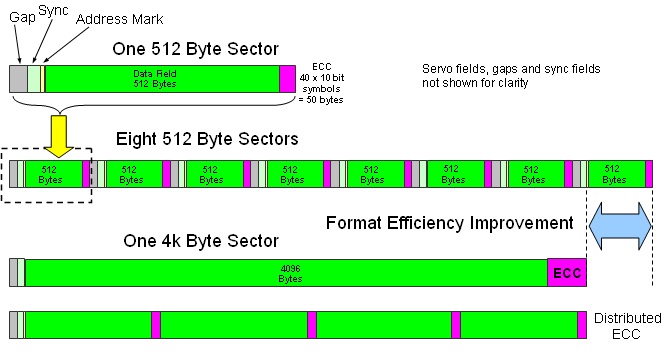Older consumer-grade HDDs had 512 byte physical sector size and all the newer HDDs and all the SSDs have physical sector size of 4096 bytes. However, there is ECC, sector address, etc data associated with each physical sector:

Does this mean that for example 1TB HDD is actually bit larger than 1TB if all the metadata associated with each sector is included? Are those sector-gap, ECC, etc fields proprietary for each manufacturer so that there is no standardized length for those fields?
Answer
Does this mean that for example 1TB HDD is actually bit larger than 1TB if all the metadata associated with each sector is included?
Yes.
Apparently you are too young to remember the yesterdays when hard disk drives and diskettes (aka floppies) were marketed with the "total unformatted capacity". End-users complained that this was a misleading number because after the drive/diskette was formatted, the usable storage capacity was much less than the "total" number. (Another complaint was the use of decimal versus binary versions of K and M multipliers that continues to this day.)
After the Western Digital hard disk controller was relocated from the PC adapter board to the HDD itself (using a new IDE interface), the next step was redefining the software interface with ATAPI, which offered logical sector addressing (instead of CHS). Eventually manufacturers eliminated the soft-sectoring capability of their HDDs due to ubiquitous use of 512-byte sectors lead by the dominance of Wintel PCs.
Since the typical modern HDD is probably hard sectored rather than soft sectored, the amount of disk capacity relegated to gaps and metadata should be irrelevant to the user. The usable storage capacity is the salient number, and cannot be changed by a low-level format which is no longer provided.
Are those sector-gap, ECC, etc fields proprietary for each manufacturer so that there is no standardized length for those fields?
Now that the disk controller has been embedded with the disk drive, yes it can.
The "total unformatted capacity" is an irrelevant number to the end-user when you've lost the capability to low-level format the disk drive, and the storage device has a high-level interface (such as ATAPI) that allows hiding the low-level storage implementation.
One of the reason for gaps is described in this answer.

No comments:
Post a Comment